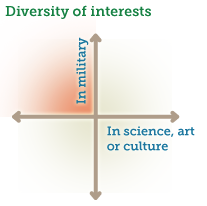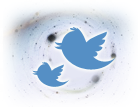Community Embraces New Word Game at Mid-Year Play Day This past Sunday, families at Takoma Park’s Seventh Annual Mid-Year Play Day had the opportunity to experience OtherWordly for the first time. Our educational language game drew curious children and parents to our table throughout the afternoon. Words in Space Several children gathered around our iPads […]
Read moreCategory: Strategy
 Is the art enough? Probably not. Art museum revenues are falling and museums need to experiment with new business models and ways to build a buzz and relevance with young audiences.
Is the art enough? Probably not. Art museum revenues are falling and museums need to experiment with new business models and ways to build a buzz and relevance with young audiences.
Yesterday, art critic Judith Dobrzynski wrote in her Real Clear Arts blog about how an upcoming nighttime event at the Hirshhorn is elitist, flaunted, and inexcusable. Dobrzynski says, “I’ve said it before, but I’ll say it again, if museum officials don’t believe that art is enough, no one else will either.” What do you think? (more…)
 Innovation takes years, if not decades. An essay by Bill Buxton, principal scientist at Microsoft Research, introduced the idea of the “The Long Nose of Innovation.” In his Jan 2008 Business Week article, he draws parallels to the ‘long tail’ of products. This has applications to all kinds of planning.
Innovation takes years, if not decades. An essay by Bill Buxton, principal scientist at Microsoft Research, introduced the idea of the “The Long Nose of Innovation.” In his Jan 2008 Business Week article, he draws parallels to the ‘long tail’ of products. This has applications to all kinds of planning.
This is what the long nose looks like as a graph (it’s a nose pointing to the left): (more…)
 What’s the difference between a science museum and a science center? To insiders, the difference is the extent a museum is based on a collection of objects vs. experiences they create for visitors.
What’s the difference between a science museum and a science center? To insiders, the difference is the extent a museum is based on a collection of objects vs. experiences they create for visitors.
To the public, it’s largely immaterial. (more…)
 Social media can feel like you are talking to the world, but in reality there’s a lot of self-selection going on. So know your audience.
Social media can feel like you are talking to the world, but in reality there’s a lot of self-selection going on. So know your audience.
Before the Internet, the gatekeepers of public information (journalists, editors and producers) considered the needs of audiences for you. These gatekeepers would filter a fire-hose of information in press releases and technical publications to deliver a digested slivers of information via television news, tv, print, and trade press. Other kinds of technical information was discussed at conferences, at meetings, in journals or in private. (See my post about “Fall of the gatekeepers“) (more…)
 National security is a useful angle for presenting science, art and culture issues to disengaged or skeptical audiences.
National security is a useful angle for presenting science, art and culture issues to disengaged or skeptical audiences.
 Like any hook, such as sports or popular culture, military and national security themes broaden an audience for outreach. There are over 3.6M military personnel in the U.S., 1.9M spouses & kids of active duty members, and over 22M veterans, who also have families. (Stats on personnel & families, and veterans.)
Like any hook, such as sports or popular culture, military and national security themes broaden an audience for outreach. There are over 3.6M military personnel in the U.S., 1.9M spouses & kids of active duty members, and over 22M veterans, who also have families. (Stats on personnel & families, and veterans.)
There are several initiatives which are bridging the military world with the sciences and culture…
(more…)
 On Twitter, almost no one hears you. Or at least that’s the case for 99.95% of Twitter users whose Tweets evaporate into the aether, scrolling off the feed, leaving scarcely a trace.
On Twitter, almost no one hears you. Or at least that’s the case for 99.95% of Twitter users whose Tweets evaporate into the aether, scrolling off the feed, leaving scarcely a trace.
According to statistics released last week by Twitter, users now send a billion Tweets a week (up nearly 3x from 350M a year ago). But most of those Tweets get little attention, reports a new study, to be presented next week at a web conference in India. The study found that attention is highly concentrated among a very narrow slice of Twitter users. Read on for more about the findings…
(more…)

The term “strategic communications” has become popular over the last two decades. It means infusing communications efforts with an agenda and a master plan. Typically, that master plan involves promoting the brand of an organization, urging people to do specific actions, or advocating particular legislation.
It can refer to both a process, and to a specific job title.
 Small differences have a big effect when trying to coax thousands or millions of people. This includes urging online readers to take an action. This post looks at how IDEA used small ads on one of our projects (a small, free web-based exhibit about Daylight Saving Time) to promote another project (a 99¢ app about Daylight Saving Time sold via the Apple app store). This post looks at statistics and ratios… (more…)
Small differences have a big effect when trying to coax thousands or millions of people. This includes urging online readers to take an action. This post looks at how IDEA used small ads on one of our projects (a small, free web-based exhibit about Daylight Saving Time) to promote another project (a 99¢ app about Daylight Saving Time sold via the Apple app store). This post looks at statistics and ratios… (more…)


 Today,
Today,  Museums increasingly realize that if they want government funding and support, they need to make a case for it, and get their voice heard. So today and tomorrow is ‘
Museums increasingly realize that if they want government funding and support, they need to make a case for it, and get their voice heard. So today and tomorrow is ‘